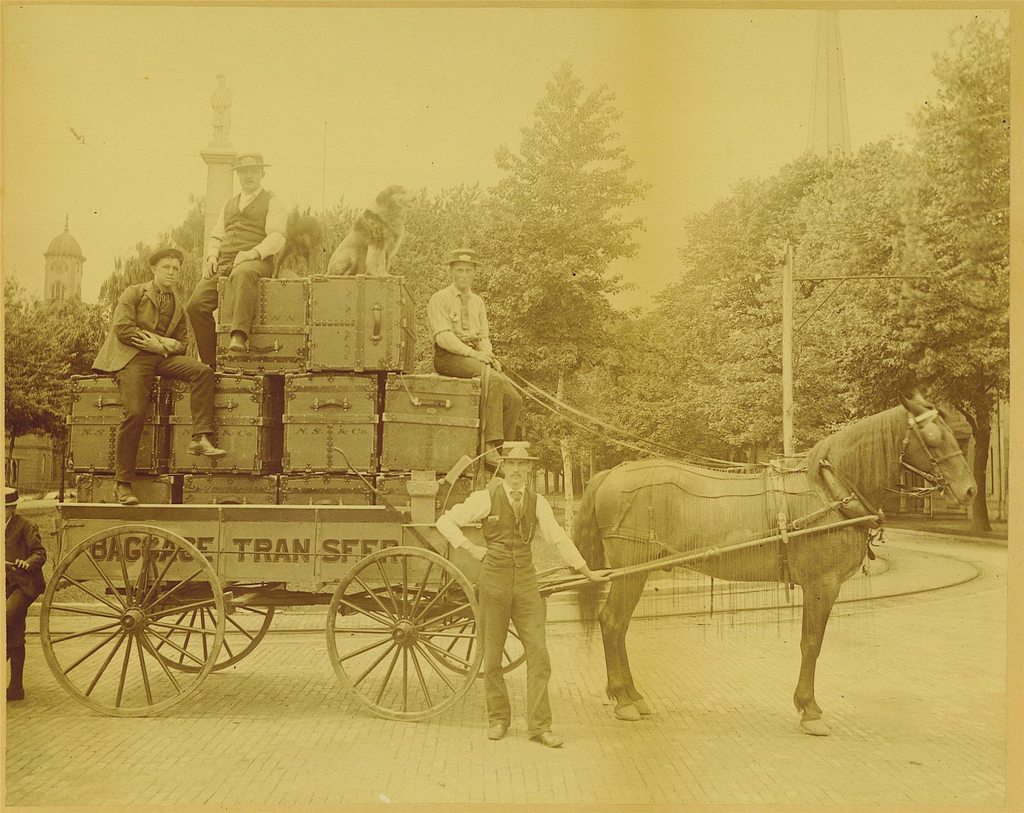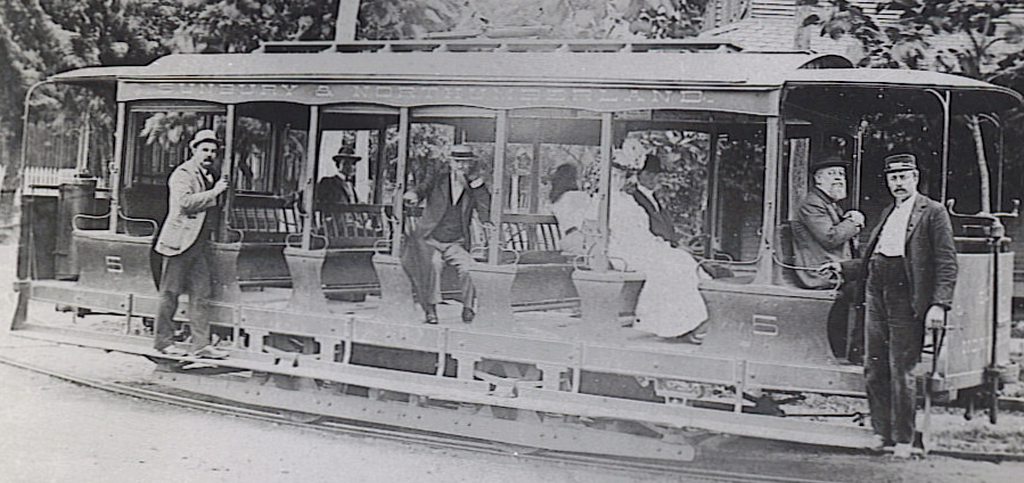Area History
The Moravian Mission and Smithy
Religious persecution forced the Moravians to abandon their settlement in Herrnhut, Saxony, in what is now Germany, and establish a Moravian settlement in America in the mid-1730s. A small group arrived in Savannah, Georgia and established the first Moravian Church in America on February 28, 1736. The group left there in 1740 and came to Pennsylvania after refusing to take up arms to defend Georgia from the Spaniards from St. Augustine. They settled first in Nazareth and then purchased their own land nearby in 1741 and built a settlement there which they named Bethlehem. The Moravians were interested in ministering to others and after their contact with Conrad Weiser decided that the Native Americans could benefit from their intervention.
Organized religion arrived in the Susquehanna River Valley in 1742 when Count Zinzendorf, founder of the renewed Moravian Church, arrived here along with a small group of Moravians to minister to the Native Americans, which established the first Native American mission in Pennsylvania at the Native American village of Shamokin, present day Sunbury. Leaving his home in Tulpehocken, present day Womelsdorf, on September 24, 1742, Conrad Weiser guided Zinzendorf, Anna Nitschmann, John Martin Mack and his wife, Jeannette, Henry Leimbach, Peter Boehler, and two Native Americans, David and Joshua to Shamokin. The difficult journey on horseback took more than four days as they crossed steep, rocky mountains, traveled through dense forests, and forded creeks with slippery bottoms as they headed north. Today the same trip takes less than two hours.
The following passage from Zinzendorf’s journal dated September 28, 1742 sums up the end of their journey. “We traveled on, and soon struck the lovely Susquehanna. Riding along its bank, we came to the boundary of Shamokin, a precipitous hill, such as I scarce ever saw. Anna, who is the most courageous of our number, and a heroine, led in the descent. I took the train of her riding habit in my hand to steady me in the saddle, Conrad held to the skirt of my overcoat, and Boehler to Conrad’s. In this way, we mutually supported each other, and the Saviour assisted us in descending the hill in safety. Toward evening we reached Shamokin, where Conrad met Shikellamy, by whom he was welcomed to the town.”
The Moravians met with Chief Shikellamy on several occasions before establishing living quarters there in 1745. John Martin Mack and his wife, Jeannette, were the first Moravians assigned to the mission at Shamokin and lived in a primitive hut. Mack wrote of the experience, “In September of 1745, my wife and I were sent to Shamokin, the very seat of the Prince of Darkness. During the four months we resided there, we were in constant danger, and there was scarcely a night but we were compelled to leave our hut, and hide in the woods, from fear of the drunken savages.”
In June of 1747, the Moravians constructed a 30’ x 18’ house for the mission on the lot where the Front Street Christian Assembly now stands. At the request of Shikellamy, the Moravians also erected a smithy on the property and in August of 1747 Anton Schmidt, a blacksmith, and his wife arrived at Shamokin. The mission and smithy operated continuously until October of 1755 when the Delawares and Shawnees threatened the Moravians following Braddock’s defeat and the Penn’s Creek Massacre. The Moravians abandoned the site and returned to safety in Bethlehem.
A Story about - The Sunbury Airport and Mile Hill Beacon
By act of the Assembly on March 21, 1772, Northumberland County was created from portions of Berks, Lancaster and Cumberland counties and became Pennsylvania’s tenth county. The Purchase of 1768 brought a large and rapid influx of people into the areas near the Susquehanna’s confluence and they needed access to government services in a convenient location. Sunbury, located on the Susquehanna River, was named the county seat.
Countless generations have traveled through the Susquehanna River Valley and the area that is now Northumberland County. Some were passing through while others came to make this place their home. From the days of being part of the Pennsylvania frontier to modern day, Northumberland County's history is diverse and interesting. The county grew and developed over the years. First having an agricultural-based economy, the building of the canals and railroads and the discovery of anthracite coal brought industry and immigrant laborers from many ethnic backgrounds to the area shifting the county’s economy to a more industrial focus. Each ethnic group brought its language, family traditions, food ways, and religious beliefs and passed them on to the next generation. Northumberland County became the Susquehanna River Valley’s melting pot and its diverse population contributed to its colorful history.
This section of our website will chronicle some of the events that have transpired here and will showcase the county's industries, leaders, and the towns and cities within its borders. We will be adding segments of the county’s history gleaned from local newspapers, publications, and other resources and will include photographs whenever possible. Please come back and visit this section often as items will be added on an ongoing basis.


Traveling on the Trolleys
For about 50 years, trolleys were a popular method of transportation all across the country. The electric street railway companies were backed by power companies and private investors who believed that the demand for trolley service to carry passengers and light cargo would surely be profitable as it was the first form of motorized transit. Those who invested in the trolley lines often created a destination for leisure activities along the line to increase traffic. Among those fair weather destinations in our area were Edgewood Park near Shamokin, Rolling Green Park in Hummels Wharf, and Island Park between Sunbury and Northumberland. Trolley riders could relax and enjoy a variety of outdoor activities, musical entertainment, dancing, and theatre acts. The initial success of the trolleys led to ambitious plans to build a network of lines to link many rural towns throughout the region but the cost of running track and purchasing cars proved to be too costly so service was limited between larger towns along the Susquehanna.
The Sunbury and Northumberland Street Railway Company received its charter on January 25, 1885. Legal concerns regarding the constitutionality of granting such charters caused a lengthy delay and the company waited to begin construction of the 3.2 mile line until the matter was resolved in 1889 by the Pennsylvania Supreme Court. Construction began in July of that year and Daft Electric Company of New York City was awarded the contract for $120,000. Only $95,000 could be raised in the Sunbury area so P.B. Shaw of Williamsport secured the balance from investors there. Shaw was an associate of Thomas Edison and assisted in raising the capital necessary for the Edison Electrical Illuminating Company of Sunbury several years before. Daft provided the electrical equipment and supervised the construction, purchasing ties and poles locally. Rail for the line came from Johnstown. Workers constructed a power station and car barn on Edison Avenue below Packer Street. Daft failed to complete the project within 90 days as promised and the railway was finally tested on April 17, 1890. One more obstacle needed to be overcome before service could begin. As the cars were being tested during a trial run in late May, they were not able to run on the bridges because of electrical problems. After Daft’s superintendent G.M. Broadmeadows designed new insulators to be used on the spans, all was well. The line was opened for service in July and carried about 800 passengers each day. Passengers were charged a nickel to ride the trolley in Sunbury, six cents to go to Northumberland, or 20 tickets could be purchased for a dollar.
The trolleys were the talk of the town, and the novelty of riding them made business boom for a while but the electric cars had their share of maintenance headaches and service was often interrupted. Derailments were common but the passengers were patient as the car was pushed back onto the track by the motorman and conductor. Trolley service between Sunbury and Northumberland was suspended for two years while repairs were made after the March 1904 ice jam and flood tore out the bridge on the Northumberland side and heavily damaged the one on the Sunbury side. Ferries transported passengers during this time.
The invention of the automobile enabled an independence that eventually made the trolleys obsolete but a need for public transportation still existed in the area. Bus service became available and the trolley between Sunbury and Northumberland made its final run on snowy March 11, 1939.
